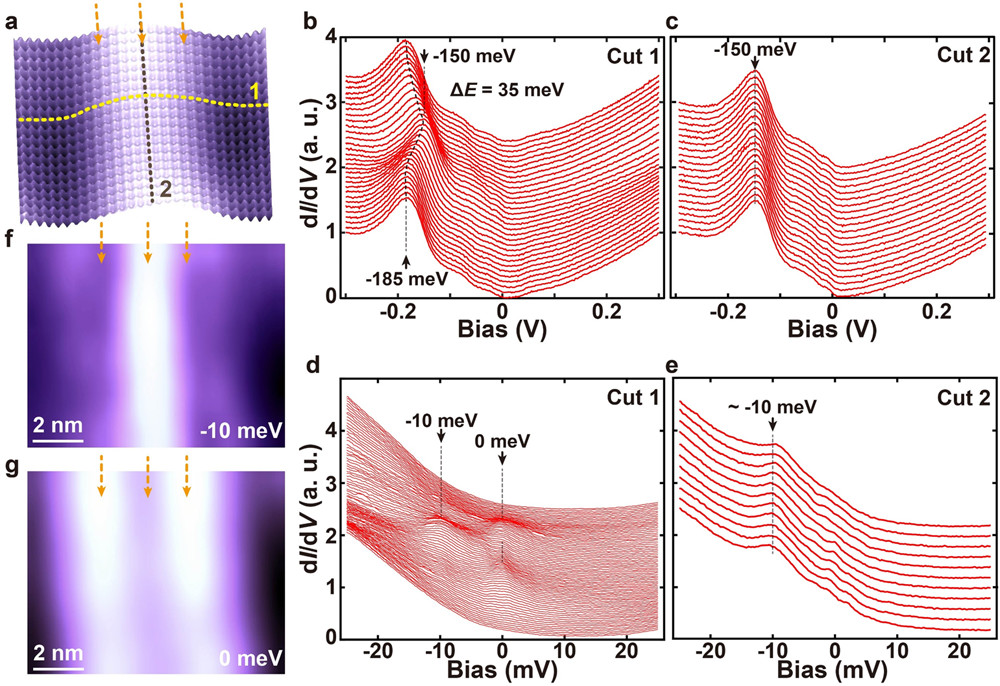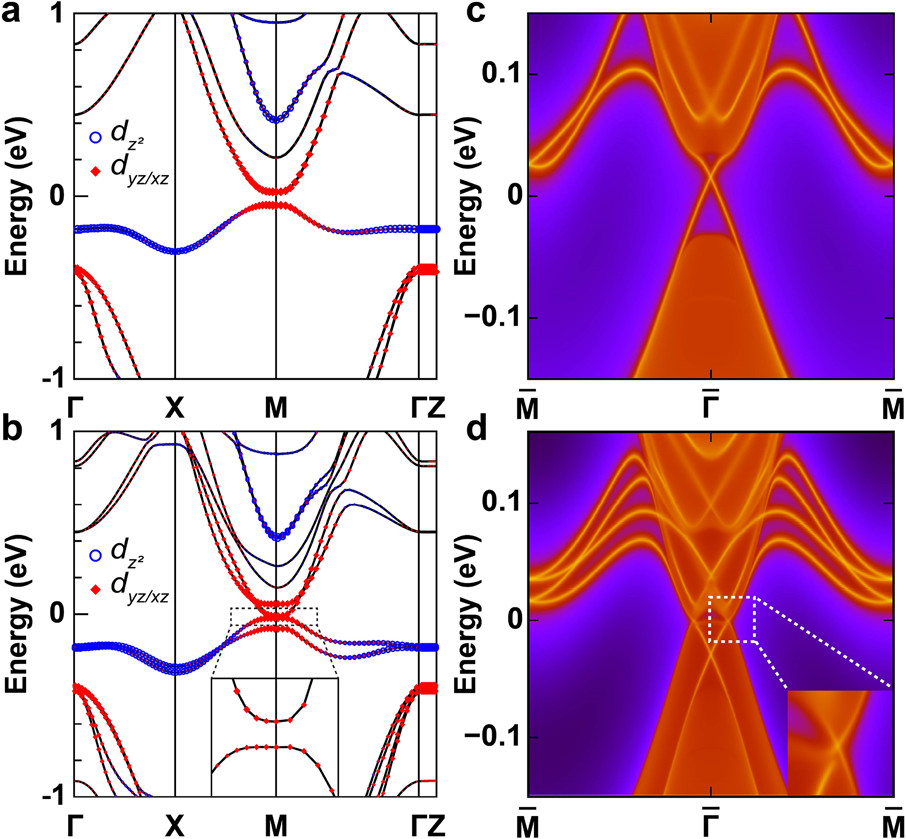Recently, Nano Letters published a paper entitled "Edge states at nematic domain walls in FeSe films". The achievement was completed by Professor Xu Gang of the National Pulse Strong Magnetic Field Science Center and Associate Professor Li Wei and Professor Xue Qikun (co-author of the correspondence) of the Physics Department of Tsinghua University. Liu Bin, a graduate student at the center, participated in the related calculation work.
Finding new topological edge states is a hot topic in condensed matter physics research. In two-dimensional topological insulators, the electron motion at the boundary no longer has energy dissipation, which will open up the development of future low-power electronic devices. As a novel material capable of superconducting enhancement, topological non-mean edge state and topological superconductivity, iron selenide (FeSe) system has received more and more attention due to its high superconducting transition temperature. At low temperatures, the rotational symmetry of the electronic structure of the material breaks, producing a great anisotropy (nematicity) along the in-plane orthogonal direction. During the formation of the nematic sequence, the material spontaneously produces domains having mutually perpendicular nematic order, and the boundaries separating the domains are referred to as nematic boundary domains. The electronic properties of the iron selenide material itself have been studied more clearly, but its domain boundary region is limited by spatial resolution and has not been systematically studied.
Using scanning tunneling microscopy, the experimental group found that the nematic sequence of electrons is suppressed in the domain boundary region, and the lattice is also stress-stretched. The researchers observed two distinct strip-like electronic states at the Fermi level on both sides of the domain boundary of the odd-even film. At the same time, the bound state of the pinning level can be further observed at the intersection of the domain boundaries.

Figure 1: Edge states and electronic structures of ~20 UC FeSe/STO domain boundaries. Where: (a) the three-dimensional STM topography of the domain boundary (b, c) along the dI/dV spectrum of the dotted line in (a), the characteristic peak shifts by ~35 meV; (d, e) along (a) The dashed line has two distinct peaks at 0 meV and -10 meV; (f, g) are spatial distributions of the electronic density of states at -10 meV and 0 meV, respectively. The scan area is consistent with (a). (g) Clear edge states.
In this study, Xu Gang and Liu Bin used first-principles calculations and theoretical analysis to explain well the experimentally observed dI/dV spectral peaks and the topological origin of the edge states: in the domain region, the nematicity is suppressed and coordinated. The Nyer antiferromagnetic configuration will cause the dxy and dyz bands to merge at point M. Considering the spin-orbit coupling (SOC) interaction, the energy band degeneracy at point M is broken and opens a topologically non-mean energy gap. For odd-numbered layers of iron selenide thin films, there will be topological boundary states protected by space-time inversion symmetry at the domain boundary; for even-numbered layers of iron selenide thin films, there will be surface-side symmetry protection at the domain boundary. Topological crystal boundary state. This is in contrast to the phenomenon that the topological boundary states in a typical two-dimensional topological insulator oscillate as the number of odd-even layers changes.

Figure 2: Energy band structure and topological edge states of the parity FeSe layer. Where: (a, b) respectively represent the calculated band structure(c, d) of the single layer and the double layer FeSe, respectively, indicating the topological edge states of the single layer and the double layer FeSe along the (110) direction.
The discovery of topological edge states at the boundary of multilayer iron-selenide films provides a new candidate system for the development of low-power electronic devices in the future, and also provides a new idea for achieving topological superconductivity in single-component materials.
The research was funded by the Ministry of Science and Technology, the National Natural Science Foundation of China, the Beijing Center for Future Chip Technology, and the Beijing Top Talents Project.
Article link:https://pubs.acs.org/doi/full/10.1021/acs.nanolett.8b03282